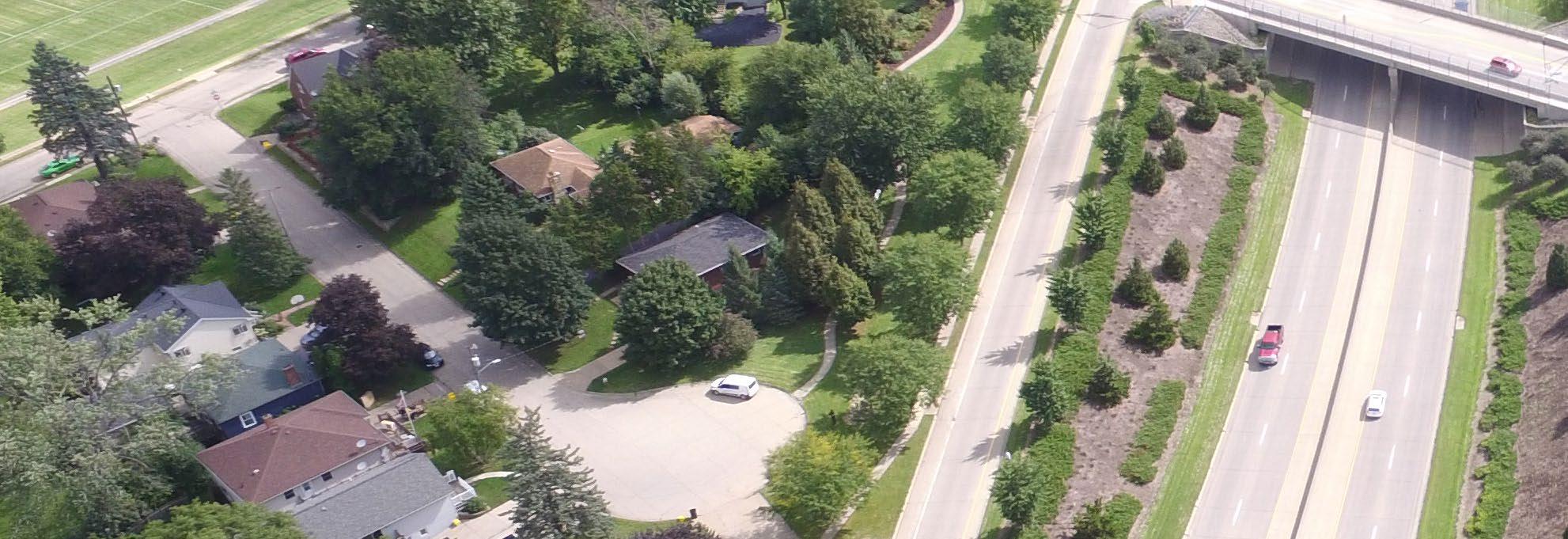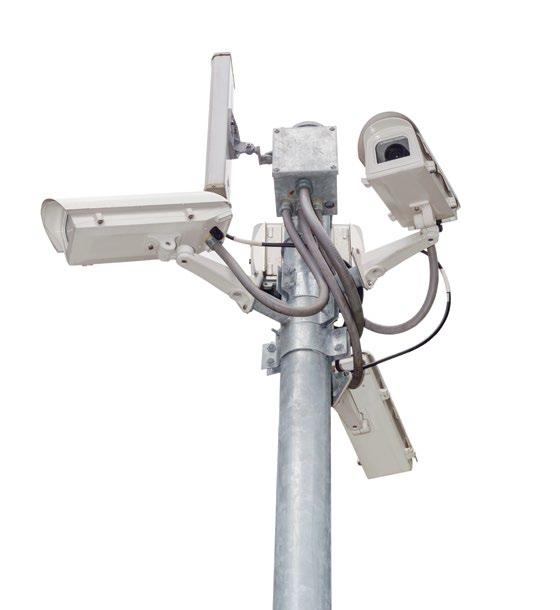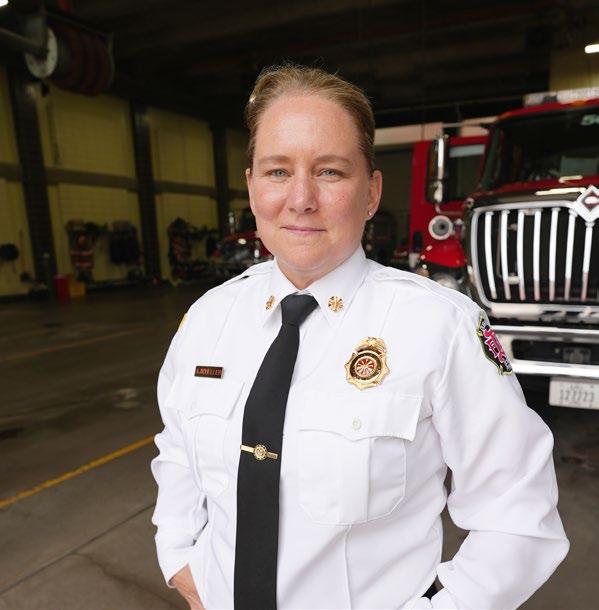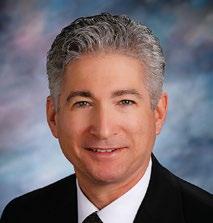
Phone: 563-589-4151
Email: publicinfo@cityofdubuque.org


Phone: 563-589-4151
Email: publicinfo@cityofdubuque.org

Throughout the course of every day, we all depend on infrastructure.
• Shortly after waking up, we drink a glass of water, brush our teeth, and shower, relying on an adequate supply of safe water delivered to our homes through the City’s water distribution system after it’s treated and softened.
 City Manager
City Manager
• We count on a sanitary sewer system and wastewater treatment system to process the water that leaves our homes when we flush the toilet or it goes down a drain.
• When we leave our homes for work, school, appointments, or important errands, we utilize Dubuque’s transportation infrastructure to get where we need to go safely and efficiently, whether on foot, by bike, by car, or by public transportation.
• We need first responders to be able to get to emergencies quickly when they are needed.
• We use the airport, downtown parking ramps, the library, Dubuque Ice Arena, Five Flags, Port of Dubuque Marina, Bunker Hill Golf Course, Grand River Center, and other general public buildings.
• When it rains or when winter snow melts in the spring, we need a stormwater management system to convey run-off safely through neighborhoods without flooding homes, businesses, and properties.

• At work, school, home, and at many appointments, access to affordable, reliable, high-speed internet and telecommunications access is critical in almost everything we do.
• In our free time, we can choose to enjoy reading books, visiting parks, trails, pools, and other facilities for entertainment and recreation, regardless of our age, income, or abilities.
In many ways, infrastructure is the most visible example of tax dollars hard at work. The City of Dubuque is committed to maintaining, improving, and expanding the many forms of infrastructure Dubuque residents and stakeholders need and count on.
As City Manager, I am extremely proud of the City employees who manage and maintain Dubuque’s infrastructure 24 hours a day, seven days a week, 365 days a year, regardless of holidays and working conditions. Their commitment, skills, and professionalism were especially evident during the worst of the COVID-19 pandemic when, despite facing a variety of challenges that impacted most aspects of life, all critical services offered by the City were maintained.
This issue of City Focus highlights many of Dubuque’s recent investments in infrastructure as well as major projects under way and planned.
In 2020, the City of Dubuque Engineering Department and Public Works Department worked with the Iowa Department of Transportation (DOT) to perform a pavement condition assessment on numerous city streets. The assessment collected data on the condition of surface pavement and roadway structures to inform a path forward for improving Dubuque’s roadways.

City streets were divided into 8,091 segments to better pinpoint areas in need of improvement. The assessment found that 47% of pavement segments were in good condition, 47% were in fair condition, and 6% were in poor condition.
With this data, the City developed a plan for the future of Dubuque’s roadways.
Roads connect us to jobs, health care, education, entertainment, and other important aspects of life. You want to get to those important destinations as safely and efficiently as possible. That’s why the City of Dubuque is working to eliminate bumps in the road, literally and figuratively.
While it may seem that the logical place to start is repairing the roads in the worst condition, these streets are often in need of total reconstruction, which is an expensive and time-intensive process. Rehabilitation and preventative maintenance on streets completed before they reach a poor condition can sometimes prove less costly and save time and money for the City and taxpayers in the long-term. While the City’s streets budget is substantial, it is not enough to fund every repair needed. Constraints like available funding, time in a construction season, and the current labor market, force the City to prioritize which streets to address and what level of care to provide.
Repairing a street’s surface flaws is less costly than completely reconstructing it. It also takes less time and has less impact on residents and their commutes, making it an effective treatment method for roads in fair to good condition. The City rehabs roadways each year through its asphalt overlay program.


The existing surface pavement where isolated cracks appear is ground up by a process called asphalt milling. Asphalt is crushed and recycled into new material used to put a new layer on the roadway, creating a fresh, smooth surface. Repairing the road to this standard also allows for crews to prevent problems from getting worse through upkeep and maintenance.
By the numbers:
• $273,310 - Average cost of asphalt overlay treatment per mile.
• 7-10 years - Average years added to extend to roads lifetime.
• 5-10 miles - Annual average of miles improved through the asphalt overlay program.
Some roadways at the end of their lifetime are past the point where rehab options are feasible, and it’s time for complete reconstruction of the street. This option makes major structural improvements to the road’s design and can lead to related improvements to structures in the area like utilities. All layers of the road are fully ripped out and replaced, which is costly and time intensive, but result in a brand-new road, with little maintenance needed, for years to come.
By the numbers:
• $2.376 million - Average cost of asphalt street reconstruction per mile.
• 30-40 years - Average years added to extend to road’s lifetime.
Some of Dubuque’s streets are the very first streets in the state of Iowa! This, along with our hilly landscape, present some challenges to road maintenance.
Several roads received more intensive improvements.
• Stoneman Road was completely reconstructed to provide a more accessible street for businesses and residents in the area, and a water main was relocated to improve capacity.

• Chavenelle Road reconstruction was completed in 2022, connecting many in our community to jobs at Dubuque Industrial Center West.
• The Northwest Arterial State of Good Repair Project reconstructed both the Pennsylvania Avenue and Asbury Road intersections, repaved the southbound lanes, and total reconstruction of the northbound lanes began.
The City is making data-driven decisions to identify future roadways in need of major improvements. Roads in very poor condition that the City plans to address as part of the engineering department’s 5-10 year reconstruction plans include:
• North Grandview from Loras to Auburn;
• North Grandview between Kane and 32nd Street; and
• select streets within the Embassy West and Sunnyslope subdivisions.


Timelines and budgets are being planned accordingly to repair the sections of streets listed above. In the meantime, the City is rehabilitating and resurfacing street segments with the current available resources.
Stoneman Road was completely reconstructed during the 2022 construction season. This allowed for water main and storm sewer improvements to be made during the reconstruction process and resulted in improved accessibility and ease along the corridor.
The City is returning roadways to a state of good repair by prioritizing high-traffic roadways that maximize the overall impact to Dubuque’s street network. During this past construction season, over 10 miles on 44 of Dubuque’s streets were improved with asphalt overlay rehabilitation and are depicted in the map.
The same talented City crews that plow the snow in the winter work throughout the construction season and around the clock to resurface and repair our roadways –but potholes still pop up; it’s inevitable. Winter weather and snow plowing takes its toll on our roads, and when spring rolls around, the warmer daytime time temps paired with the overnight lows put stress on our streets. You can help us locate and repair potholes, by reporting them at www.cityofdubuque.org/citizensupport
In 2022, the City and the Iowa Department of Transportation began a multi-year project to bring the Northwest Arterial back to a state of good repair. This includes the rehabilitation and reconstruction of the arterial from U.S. 20 to John F. Kennedy Road.

Construction began in June 2022 with the reconstruction of the Pennsylvania Avenue and Asbury Road intersections. As planned, both intersections were completed and open to traffic before school resumed in August. The southbound arterial lanes were then milled and repaved with asphalt and new four-foot-wide shoulders were added.
In October, work shifted to the northbound arterial lanes. The section from U.S. 20 to the Catfish Creek bridge was milled and repaved with asphalt and a section near John F. Kennedy Road was reconstructed.
Work on the northbound lanes is expected to resume in April 2023. Unlike the southbound lanes, the northbound lanes are undergoing total reconstruction. This includes the removal of existing concrete pavement, excavation, and installing new subdrains, stone base, and 13.5 inches of new asphalt pavement.
During construction, the northbound lanes will be completely closed with two-way, head-to-head traffic in the southbound lanes. Median crossings will be installed at Pennsylvania Avenue and Asbury Road to allow for normal traffic flow through the intersections. The project is expected to be finished in August 2023.
The Northwest Arterial is one of Dubuque’s busiest roadways. On average, 25,000 motorists travel on the arterial each day. That is over 9 million trips per year!
Although road construction projects may present short-term challenges for drivers, over the long term, the improved infrastructure benefits the community. Better street conditions improve safety and traffic flow and reduce fuel consumption and wear and tear on vehicles.NORTHWEST ARTERIAL PAVEMENT MILLING
The Northwest Arterial project is part of a Memorandum of Understanding (MOU) between the City and the State of Iowa (Iowa DOT), an ongoing collaboration since 2013 centered around the development of the Southwest Arterial. Although the City served as the lead agency for construction of the Southwest Arterial, it was funded by the State.
After the Southwest Arterial was completed and open to traffic, the MOU included a Transfer of Jurisdiction of the Southwest Arterial from the City to the State in exchange for the Transfer of Jurisdiction of the Northwest Arterial and the Central Avenue/White Street corridor from the State to the City. The transfer was completed and took effect in January 2021.
To transfer ownership, state law requires roads to be in a state of good repair. Over the last several years, the City has completed major rehabilitation projects on Central Avenue and portions of White Street as part of the roadway transfer and is currently doing the same on the Northwest Arterial.
The total project cost is approximately $9.2 million, the majority of which will be paid for through state funds as part of the Transfer of Jurisdiction. The project also received $4.8 million in Dubuque Metropolitan Area Transportation Study Surface Transportation Program SWAP funds.
To stay updated on project-related street closures and detours, sign up for Northwest Arterial State of Good Repair email and/or text alerts at www.cityofdubuque.org/notifyme.
Another high-traffic roadway in Dubuque is U.S. 20 (also known as Dodge Street), which is the primary route for east/west travel in the city. Future traffic projections indicate that U.S. 20 alone will not provide sufficient capacity for travel from the east side of the city to the west with Dubuque’s projected growth. Capacity along other east/west roadways will need to be increased and improved to provide connectivity between the growing areas near the west and our vibrant downtown in the east. This realization became clear to the City in 2010 and prompted the East/West Corridor Connectivity Study.
Through traffic counts and photos and video analysis of Dubuque’s other east/west corridors, the City gained insight on travel times, intersection turning movement counts, and existing signal timings to determine traffic flow. This data was taken into consideration along with the potential traffic volume caused by diverting motorists from U.S. 20 onto these roadways. Ultimately, it was determined that three other Dubuque roadways that span from the east of our city to its west had the potential to support growing capacity if roadway improvements were made.
In December 2021, the City Council approved a contract with a consultant to complete the preliminary engineering design and environmental clearance phase, advancing the development of the East/West Corridor capacity improvements along University Avenue, Asbury Road, and Pennsylvania Avenue. As design options are finalized, the City anticipates holding public information meetings with project stakeholders and property owners to seek input on preliminary design alternatives over the next year. For more information on the project and input opportunities, visit www.cityofdubuque.org/eastwestcorridor.
Stay in the know!
Businesses and residents rely on having access to parking. It is essential to a vibrant, strong economy and expanding connectivity from point A to point B. Lack of available parking can lead to employees, customers, and tenants needing to walk longer distances between open parking spaces and their final destination. That is why the City of Dubuque is developing “Move DBQ,” a new smart parking and mobility plan that will shape transportation systems in Dubuque for the next 10 to 15 years.
The City’s current parking ramp fee collection systems and on-street meters have exceeded their expected lifespan and are equipped with outdated technology, some of which is no longer supported. These systems are not efficient or sustainable for our future. The Move DBQ plan will provide a long-term roadmap for how the City will implement and invest in new technologies and systems to improve parking access, efficiency, and overall user experience.
The City is conducting a detailed assessment of Dubuque’s on- and off-street parking systems including how parking ramps are managed, how meter systems work, financial metrics, parking utilization, and EV charging locations to ensure that the supply and demand are in balance. Technology that can be used to improve the parking experience, such as wayfinding, meter and gating systems, and convenient payment options, is being evaluated as solutions to our city’s parking issues.
The project will also include a high-level assessment of Dubuque’s current transportation offerings and identify opportunities to advance the ease of traveling and improve the connectedness of the downtown transportation network. This assessment will help create a more connected community for those people who rely on and use alternative modes of transportation such as walking, biking, ride-hailing, micromobility devices, and public transit.
Assessing the current conditions of parking infrastructure and collecting data and input.
Analyzing future needs, envisioning scenarios, and exploring financial modeling to help determine a plan.
A Smart Parking and Mobility Management Plan will be created and used as a guide to implement parking improvements.
Implementation of the Smart Parking and Mobility Management Plan is slated to start summer 2023. Provide your input today.
If you live, work, or visit places within the Move DBQ study area, including downtown Dubuque and the Historic Millwork District, you will likely see technology changes to how parking ramps and meters are managed in the next several years. The City wants to know your ideas, concerns, and preferences for improving parking and creating a more connected community! Share your thoughts at www.cityofdubuque.org/movedbq or scan the QR code.


A parking spot is more than just a slab of concrete. Our vehicles connect us to education, jobs, healthcare, and other goods and services outside of walking distance from our home. In a city, having accessible, affordable, and readily available parking gives you the keys to go where you want without worrying what to do with your car when you get there.
That’s why the City of Dubuque offers a variety of different parking options that span downtown Dubuque, each with their own benefits. This gives residents and visitors alike the opportunity to choose parking that best meets the needs of their trip – increasing commerce in our city and connecting them to goods and services outside of walking distance from our home.
Dubuque has seven parking ramps strategically located throughout the downtown area, allowing commuters to park and walk to various destinations. In total, there are 3,910 parking spaces in City ramps. Some of these spots are rented at monthly rates for commuters who take trips to the downtown for work almost daily. Some spots are available at an hourly rate for those visiting or only downtown for the day. Spots in the Port of Dubuque Parking Ramp are free for residents and visitors looking to explore Dubuque’s riverwalk and nearby attractions.
While costly to construct, parking ramps offer efficiency. Hundreds of parking spots are fit into one structure, conserving land and space.

An alternative to parking ramps is parking lots. Dubuque has 19 surface lots located across the downtown district. Combined, there is a total of 397 parking lot spaces. Like ramps, some of these spots are reserved monthly for frequent commuters. Other spots are metered, allowing motorists to park their car in the lot temporarily and pay by the amount of time the plan on being parked there.
Parking lots don’t house as many spaces as ramps, but they still have unique benefits. Parking lots cost less to create and maintain, making adding them to our parking network easier. Dubuque has been able to add more parking lots throughout downtown, creating parking options closer to commuters’ destinations than ramps.


Finding a parking spot directly outside of your destination is often the most convenient option and leaves you feeling like you’ve won the lottery. Dubuque has over 2,000 metered on-street parking spaces that create a desirable parking option. However, there is not enough space directly outside of every destination to offer on-street parking for everyone.
That’s why the city has parking meters. Although you might find them annoying, they encourage parking turnover so that a car doesn’t remain parked outside of a business all day long--even more annoying, right? They instead motivate one customer to make way for the next, through financial incentives. Meters cost $0.25 per 20 minutes parked, and are free at night and on Sundays. This pricing model takes peak hours into account and incentivizes other modes of transportation like walking, biking, or taking the Jule, or other available parking options.
When investing in infrastructure, it’s important to build for the future. As alternative modes of transportation grow, the City of Dubuque is planning to pave new paths that allow residents to walk, bike, ride, or roll however they like. That’s the idea behind a complete street.
Complete streets are designed and operated to enable safe access for all users. Pedestrians, bicyclists, motorists, and transit riders of all ages and abilities must be able to safely move along and across a complete street. All complete streets are different in what they offer. Sidewalks, bike lanes or wide paved shoulders, special bus lanes, comfortable and accessible transit stops, frequent crossing opportunities, median islands, accessible pedestrian signals, and curb extensions are some features that allow residents to travel through an alternative mode of transportation easier.
In 2011, the Dubuque City Council signed a complete streets policy to develop as many street projects as possible in an affordable, balanced, responsible, and equitable way that accommodates and encourages travel by motorists, bicyclists, public transit vehicles and their passengers, and pedestrians of all ages and abilities.

• Complete streets improve safety. A Federal Highways Administration safety review found that streets designed with features like sidewalks, raised medians, and trafficslowing measures improve pedestrian safety. These features enable pedestrians to cross busy roads in two stages, reduce left-turning motorist crashes, and improve bicycle safety through visibility.
• Complete streets encourage walking and bicycling for health. Having sidewalks, bikeways, and other places designed for physical activity allows residents to commute in a way that’s good for their health.
• Complete streets address climate change. By offering safe and accessible options for other modes of transportation, trips can be taken by lower carbon-producing modes of transportation.
• Complete streets foster strong communities. They play an important role in livable communities, where all peopleregardless of age, ability or mode of transportation - feel safe and welcome on the roadways.
Incorporating these aspects of a complete street into roadway designs can have many different benefits:Bus stop ADA Ramps Crosswalks Reduced vehicle speed Median islands
Dubuque’s 53-mile bike/hike trail system offers challenging treks and relaxed cruises, with something for everyone. The system includes 28 miles of on-street routes and 25 miles of paved trails for walking, hiking, and biking. The on-street network includes sections of the Mississippi River Trail through the Downtown and Historic Millwork Districts, and the Washington and North End residential neighborhoods. While the off-road network includes trails at the John G. Bergfeld Recreation Area, Eagle Point Park, Port of Dubuque, and other natural beauties. The City’s network is also expanding in the coming years, with trails planned around Chaplain Schmitt Island and the Bee Branch 16th Street detention basin.
“Sharrows” are painted markings on roadways that let travelers know that the road is meant to be shared. They are placed on the part of the road that is the preferred location for bike traffic, reminding motorists to share a portion of the road so that bike traffic can safely and comfortably travel, and reminding bike traffic where to ride so they can safely and comfortably avoid moving and parked cars on the roadway.
Sharrows in Dubuque are located in the Millwork District, which is more residential than major roadways. Cars are typically traveling slower due to the features of the street and the location of the roadway. The existing roads that have had sharrows added create an “on-street bike trail” that connects to major off-street trails in the city. This option is more economical and easily accomplished over others.
If you’re out for a ride and in need of a tune up, you can visit one of the city’s bike fix-it stations. These stations have the tools needed to get your ride in top shape and are located conveniently in the Central Ave. and Intermodal parking ramps, Town Clock Plaza, Bee Branch Greenway, and at other locations around Dubuque. Bike racks are also conveniently placed throughout the city and next to common destinations that allow for easy and proper storage.
Not every trip in Dubuque is possible to be made by bike for everyone with our city’s hills, however. One way to “beat the bluff” is utilizing the Jule’s rack and ride option. The service allows residents to bike to a bus stop, rack their bike on the front of the bus and utilize public transit for part of their trip, and finish the remainder on their bicycle. Equipping all Jule buses with bike racks is just another way the City is eliminating barriers to other forms of transportation, so you can travel your way.
“I enjoy riding my bike in Dubuque for transportation and recreation. I ride to go places like work and pick up my daughter from daycare – she likes to ride in the child seat on the back. I enjoy the off-street trails such as the North End Trail and those along the Mississippi and the Bee Branch Creek. As Dubuque grows, we hope to see our biking infrastructure expand as well.”
 Jason Duba, City of Dubuque assistant planner
Jason Duba, City of Dubuque assistant planner
When the ground thaws in the spring, work is set to begin on the John F. Kennedy Road sidewalk installation project. The project will add sidewalks where they are absent from Asbury Road to the Northwest Arterial, improving safety and mobility for pedestrians traveling in the area. Ramps that comply with the Americans with Disabilities Act will be added at street intersections, improving access for residents with limited mobility, students making their way to Eisenhower Elementary, and others.
The project is anticipated to cost $633,226. The City sought creative funding sources and received a $190,000 grant from the U.S. Department of Transportation. As a result of this grant, the city was able to reduce the sidewalk assessment costs to residents by 54%. The City is also working with low-income residents in the impacted area to offset their costs through Community Development Block Grant funds. When completed, this project will allow people to access goods, services, education and more that are housed along the vibrant J.F.K. corridor.
According to the EPA, 27% of all greenhouse gas emissions in 2020 were a result of transportation, mainly from gasoline and diesel engines. Electric vehicles (EV) offer the opportunity to reduce emissions and are growing in use. Additionally, the current White House administration issued an executive order setting a target for EVs to represent half of all vehicle sales by 2030. The City of Dubuque’s current EV infrastructure includes six charging stations in the Intermodal Parking Ramp and five outlets to plug into in the Central Avenue Parking Ramp, along with several stations maintained by private businesses. This infrastructure alone will not be enough, however, to meet growing needs.
Charging stations will be added to the Port of Dubuque Parking Ramp and the Historic Federal Building parking lot. Two stations for public use will be available at both locations. These new chargers will be level 2 chargers which have a higher voltage than level 1 chargers. This results in
a shorter charge time and allows for more vehicles to connect throughout day. These new stations are expected to be installed in the spring of 2023. Move DBQ, the City’s smart parking and mobility plan that’s currently studying EV needs in our community, will inform and prioritize EV accommodations for the future.

In 2017, the City of Dubuque Fire Department aimed to offset electrical costs by installing solar technology on the roofs of Fire Stations 1, 2, 3, 4, 5, as well as fire headquarters. At the time of installation, it was predicted that each kilowatt-hour produced would save approximately 30% on utility rates. That’s the equivalent of other greenhouse gas offsets like:
• Planting 87,141 trees
• Reducing driving of 7,480,000 miles
• Recycling 11,818 tons of waste instead of sending it to the landfill.
At fire headquarters alone, the electricity cost savings has been $19,763. Year after year this investment is paying off and saving the City and taxpayers thousands.
The City is helping residents access similar solar infrastructure through its Renew DBQ program. Starting in 2021 as a pilot program, Renew DBQ was able to help 10 low- to

moderate-incomes (LMI) families address energy burdens by adding solar panels to their homes. This project takes a three-part approach to sustainability by reducing monthly energy bills for residents, serves as an economic multiplier/job creator for local installers, and helps the City to reach its 50% by 2030 greenhouse gas reduction goals. The City plans to continue the program with available funding. For more information on eligibility and to apply, visit www. cityofdubuque.org/sustainability.
Taking the bus is one way to cut your carbon footprint, but what if that trip actually had zero emissions in total? The Jule, Dubuque’s public transportation system, is working to become carbon neutral by adding electric buses to its fleet. The Dubuque City Council has approved the purchase of an electric bus, with the majority of costs being covered by a $1.07 million grant the city received in 2020 through the Federal Transit Administration’s Buses and Bus Facilities Program. Current options are being explored for the City’s first electric bus based on market availability and the needs of riders. Ryan Knuckey, director of transportation services for the City, says he’s hopeful that the bus will hit the streets of Dubuque sometime in the Spring of 2024.

Before you take a sip of water, it probably doesn’t cross your mind where it came from and how it got to your tap. It’s easy to just flip on the faucet and let it flow.
That’s because behind the scenes there are several wells pulling water from our natural aquifers, dozens of City staff testing and treating for impurities, and countless miles of water mains and infrastructure to deliver it to your home, taking the worry out of water for you.
In Dubuque, water is supplied by natural aquifers, or layers of permeable ground beneath our feet that hold water.
Specifically, the aquifers from which Dubuque’s water originates are the Jordan Aquifer, the Mt. Simon Aquifer, and the Apple-Plum Alluvial Aquifer. Aquifers are where our water starts, in its rawest form.
Well systems then pull untreated water from the underground aquifers above ground for our use. Of the nine wells Dubuque currently uses for our city’s water supply, there are four deep wells (1,000 feet –1,800 feet deep), and five shallow wells (200 feet deep.)
The City’s well system directs untreated source water to Dubuque’s Eagle Point Treatment Plant where it undergoes several
1. The first of these treatment processes is aeration where untreated water is cascaded through a series of trays, aerating the water which promotes the exchange of gases. Aeration is similar to the natural process that occurs when a stream flows through rapids or over falls and unwanted gases are removed.
2. A flocculant aid is added to force small particles to clump together and settle out, improving the clarity of the water.
3. Lime (or calcium oxide) is then added to soften or reduce the minerals that typically make water hard. Excessive hardness in water creates residue, increases deposits in water heaters and boilers, interferes with some industrial processes, and sometimes gives water an unappealing taste and odor.

4. The addition of lime increases the pH, or acidity of the water. Next, to stabilize the water’s acidity, carbon dioxide must be added to lower the pH.
5. The water is then passed through a sand and gravel filter, removing any remaining matter.
6. Next, chlorine is added to disinfect the water and ensures safety by destroying disease-causing organisms.
7. Fluoride is then added at a miniscule level to help prevent tooth decay.

8. Finally, phosphate is added to chemically stabilize the water and decrease the possibility that lead and copper will leach out of pipes and into tap water.
Lead and copper can enter drinking water primarily from materials used in service lines and home plumbing. The City of Dubuque Water Department is responsible for providing high quality drinking water, but cannot control the materials used in home plumbing. That’s why the City adds protective phosphate to our water and conducts an annual lead and copper sampling program to monitor drinking water at customer taps.
563-589-4291.
Creating safe drinking water doesn’t stop with the treatment process. Our city’s water is tested frequently and at various points in the distribution system to ensure it’s safe for consumption. Over 200 tests a day are performed at the Eagle Point Water Treatment Facility to make sure the City’s treatment and delivery process produces safe water. Additionally, 70 bacterial samples are collected throughout the distribution system monthly and tested. The U.S. Environmental Protection Agency (EPA) regulates drinking water quality in public water systems and the tests Dubuque performs assure our water meets all state and federal drinking water quality requirements.
After being treated, tested, and made ready for use, our city’s water is distributed to homes, businesses, schools, and more through a system of 330 miles of water mains. Water mains are large pipes that run under our roads and connect to smaller water service lines that bring water into individual buildings. Over 6 million gallons are treated per day and distributed for customer use in Dubuque.
Completed in 2020, the 1.25-million gallon elevated tower, along with distribution improvements, increased water pressure to customers in and around the Roosevelt Street and Peru Road area.

Excess treated water is stored in tanks and water towers to be used at peak demand times, like mornings when everyone in the city is brushing their teeth, taking a shower, and making a pot of coffee. Water towers also provide improved water pressure without the need for pumps by elevating the water high above the pipes that lead to your home and letting gravity do the work of pushing it there.
The next time you turn on the faucet, you’ll know exactly where your water comes from and the infrastructure needed to supply your home with every satisfying sip of water.

Beneath your feet lies a vast network of infrastructure. In the United States, pipelines that distribute drinking water span almost one million miles. Here in Dubuque, there are over 330 miles of pipeline used in our water distribution system.
Most water mains run under our roads and connect to smaller water service lines. Water service lines are smaller pipes that transport the water from water mains to individual properties. While water mains are maintained by the City, water service lines are the responsibility of the property owner. Over six million gallons of water are distributed daily.

Water also makes its way to fire hydrants for use in case of an emergency. Knowing that water distribution adds safety to our community, Dubuque has prioritized implementing state-of-the-line control valves and other infrastructure that increases our water pressure, giving us more peace of mind. That’s not the only pay off. Dubuque Fire has earned a class 2 rating by the Insurance Services Office (ISO) for
our high quality fire department and the capacity and quality of water supply of our community. A class 2 rating is the second highest possible rating for fire protection services and lowers the insurance costs of property owners in Dubuque.
City water distribution workers tapping a water main on Cedar Cross Rd.
Access to high quality water is critical for safety and comfort. That’s why recent City projects have expanded our current water infrastructure to connect more of our community. Take the J.F.K. Road water main extension project, for example. Completed in the summer 2022, it added an additional 4,250 feet of water main pipeline to our existing infrastructure. The expansion brought City water to the Wildflower Ridge Subdivision, which was previously on a private well. Not only was water quality and pressure improved in this neighborhood, but fire protection was also enhanced. Putting infrastructure in place allows for the potential connection of other developments and subdivisions in the future.
Some of Dubuque’s water mains have been supplying homes with water for decades. While these pipes are extremely reliable for the most part, main breaks can occur. Main breaks are more likely to occur during cold weather and freeze/thaw cycles, due to shifting ground and related stress on underground pipes. City crews work diligently and around the clock to fix main breaks quickly without disrupting service. However, if the break results in a significant pressure drop in service lines, a boil water advisory may be required. These incidents are not common, but when they do happen, it’s important to stay in the know.
The City contacts affected customers through Alert Iowa, the Dubuque’s official emergency notification system. Residents can sign up to be notified by voice call, text message, or email during emergencies like a boil water advisory, extreme weather, and other events like odd/even snow route policy implementation. Sign up for Alert Iowa today by visiting www.cityofdubuque.org/alertiowa or texting “DubuqueIA” to 67283.

The City of Dubuque has two separate underground collection systems: a stormwater management system for rainwater runoff and snow and ice melt, and a sanitary sewer system for wastewater. The two systems are not connected and serve different purposes, but both help maintain a safe and sanitary environment for residents.
The stormwater management system carries rainwater runoff and melting snow and ice from roofs, driveways, parking lots, and streets and channels it directly into streams, rivers, and other bodies of water.
When it rains, water that flows over driveways, parking lots, roofs, compacted lawns, and other impervious surfaces is called “runoff.” Runoff flows along streets and across surfaces until it enters into “storm drain inlets.” Storm drain inlets are connected to “storm sewers” constructed under city streets. The water travels through the underground storm sewers until it eventually flows into streams and rivers without having been treated. The point at which the water leaves the storm sewer and enters the waterway is called an “outlet.”
The City currently manages 6,535 stormwater intakes, 153 miles of storm sewers, 473 stormwater outlets, and 1,974 stormwater manholes. The manholes provide access to the underground storm sewers for maintenance activities including routine inspections, removal of sediment and debris, and the reconstruction or repair of pipes and structures.
Dubuque’s stormwater management system also includes detention areas, permeable pavement, the restored Bee Branch Creek Greenway, flood gates, and pumping stations. This system is vital to preventing flooding, erosion, and stream channel degradation.
Stormwater management also aims to prevent water pollution. Runoff picks up pollution, such as chemicals, bacteria, sediment, and trash, and is carried untreated by gutters, open drainage ways, and storm sewers directly into local streams and rivers and, ultimately, the Mississippi River. This is why you should never put any kind of trash or hazardous waste down a storm inlet. For more information, visit www.cityofdubuque.org/ stormwater.
Dubuque’s storm drain mural project aims to educate the community on the importance of keeping our waterways free of litter and debris.

Sanitary sewers are separate from storm sewers. They carry wastewater from homes and businesses to wastewater treatment plants.
When you flush the toilet, the water is carried away from your home through small pipes called “sewer laterals” to larger, City-owned pipes called “sewer mains.” Sewer laterals usually run below your home, under your yard, and under the street where they connect to sewer mains. From there, it travels through an intricate maze of underground pipes until it reaches the Water & Resource Recovery Center on Julien Dubuque Drive for processing before it returns to the environment.
Some pipes transport wastewater by way of gravity. Other pipes in low-lying areas use pumps to move wastewater to a higher elevation. These are called “force mains.” Sanitary sewers are accessed via manholes for maintenance and repair. Clean-outs are located on private properties to provide access to sewer laterals. If there is a blockage in the lateral between your home and the sewer main, it may be accessible via the clean-out.
The City currently manages 103 pump stations, and approximately 331 miles of sanitary sewer pipes ranging in size from 4 to 49 inches, which serve over 20,000 properties. This infrastructure is critical for the protection of public health and environment.
Storm
sewers, and what they do for you
Most people prefer not to think about what happens to the stuff they flush down the toilet. A “flush it and forget it” mentality is fine, but a lot actually happens when wastewater goes down the drain in Dubuque and ends up at the Water & Resource Recovery Center (WRRC). The facility processes an average of 7 million gallons of wastewater per day. This includes water from toilets, showers, sinks, dishwashers, car washes, and the many businesses and industries that produce wastewater.
To handle all that wastewater, the WRRC underwent a nearly $70 million facility upgrade that was completed in 2013. At the time, it was the largest capital improvement project in the city’s history. The new treatment system has been in operation for nearly a decade now and is showing major return on investment.
The WRRC converts the energy in waste into readily usable forms using anaerobic digestion. This process produces biogas, which is roughly 70% methane. The biogas is captured, cleaned, and injected into the natural gas distribution system as renewable natural gas. Some of the natural gas is returned to the WRRC where it is used to produce electricity and heat.
Water & Resource Recovery Center

795 Julien Dubuque Dr. Dubuque, IA 52003-7996
Electricty Costs (FY2011) $579,205 Electricity Costs (FY2022) $356,782
Fuel Oil Costs (FY2011) $300,000 Fuel Oil Costs After Upgrade $0 Annual Fuel Oil Cost Savings $300,000
The WRRC produces more methane than can be used at the facility. The City entered into an agreement with BioResource Development, LLC in 2016 for the co-location of equipment at the WRRC which further processes all biogas produced at the facility. Renewable natural gas is delivered to the Black Hills Energy pipeline, qualifying for payments for environmental attributes due to its use as a renewable fuel. The City also receives lease payments and a portion of gross revenues from the sale of the gas.
Thanks to the facility upgrades, the WRRC now has the capacity to process high-strength waste, which contains higher concentrations of chemicals generated through production or manufacturing processes. Local companies like Hormel, Rousselot, Simmons Pet Food, and Western Dubuque Biodiesel can bring their waste products to the WRRC to be processed. This saves local businesses from incurring the transportation costs to other locations for disposal. In fact, Hormel’s cost per gallon for treatment/disposal was reduced by 60%, no longer having to transport their high-strength waste over 90 miles to Madison, Wis., every day. This disposal option makes Dubuque a more attractive location for businesses, plus produces revenue for the City. This fiscal year alone, the revenue generated for the City’s sanitary sewer fund is expected to be $305,000 - a great outcome considering the input.
The Water & Resource Recovery Center currently operates at 70-75% of its average capacity, which means there is considerable capacity to meet future residential and industrial growth.

By participating in City Life, you’ll have the opportunity to learn more about City operations and services that make Dubuque a great place to live. Through presentations, tours, and conversations with neighbors, you’ll see taxpayer investments at work and be able to share your thoughts.

Visit www.cityofdubuque.org/citylife for more information!

If all this newfound knowledge has sparked interest in how our city works, consider attending City Life, Dubuque’s fun, free, and interactive course on local government.

The City of Dubuque maintains a system of over 1,300 on-street cameras. The cameras are a part of Dubuque’s STREETS Project (Smart Traffic Routing with Efficient and Effective Traffic System) and provide real-time traffic data that is processed by artificial intelligence to improve mobility, flow, and safety in the city.
This results in:
• Quicker commutes: Data and artificial intelligence inform traffic lights to reduce congestion, improving travel in real time. Information is also shared with GIS mapping systems to reroute commuters, balance delays, and reduce congestion.
• Safer trips: Video footage is investigated after an incident to determine the cause of an accident and identify potential traffic rerouting solutions.
• Reducing emissions: Efficiently routing traffic cuts down on traffic delays and time spent at red lights, reducing emissions from motor vehicles.
Another added benefit is that after an accident or crime, the Dubuque Police Department can review the City of Dubuque Engineering Department’s recorded camera footage of the scene. The footage sheds new light on cases, adding unbiased information to the investigation. “When traffic accidents occur, we’re able to go back and watch exactly how it played out. We then have the full picture, and our investigation isn’t subject to any ‘he said/she said’ situation,” said Lieutenant Brendan
Welsh, public information officer for the Dubuque Police Department.
When crimes occur and the suspect is unknown, the police department combines highly skilled police work with using the camera system to effectively identify, track, and find the culprit. Take the example of hit and run to a parked car. Instead of being left clueless, police can access the recording and see exactly what happened. Sometime the license plate is visible, and officials know exactly who they’re looking for. Other times, they’re able to follow the car that fled the scene by tracking them through the network of cameras – which provides them with a view of the license plate or leads them to the culprit.

The national clearance rate for crimes against persons is 46% but the Dubuque clearance rate is 85%!
“The cameras don’t catch things like speeding or drivers who run red lights. That’s not what they’re there for, and they’re not capable of doing that,” said Welsh. “Our engineering department uses them to time-up traffic lights and monitor traffic flow. The fact that we have access to the recordings and can follow up with them in an investigation is just another tool that helps keep our city safe.”
In 2021, the city installed 30 new cameras and 53 cameras were replaced. The Dubuque City Council has also allotted funding for additional cameras in the next fiscal year for continued investment in this infrastructure that serves our community in more way than one.
How do you solve a crime without a witness, little evidence, and no leads? In some cities, that’s where the case goes cold. In Dubuque, however, our police department has another tool they can use: the City’s traffic and security camera network.
When 911 dispatchers take your call, the appropriate response units are notified as quickly as possible. They collect critical information to determine the type of incident so the appropriate staff and equipment needed for assistance are deployed. The dispatcher also continues to collect information from you to provide to responders even after units are dispatched and en route.
Crews dress in all the appropriate safety gear, board the vehicle, and put the wheels in motion. The time between units being deployed and arriving on scene can be different for each fire station and include many factors such as distance from the incident, topography, traffic, time of day, and weather.
These factors play a role in the total time it takes from a call being received to arrival on scene. The Dubuque Fire Department’s goal is to respond within six minutes total time for emergency medical services, and six minutes and 20 seconds for emergency fire responses. These times are determined from national standards, strategic planning, community input, and an international accreditation process which validates our processes and protocols.

Having standards set allows us to identify shortcomings and continually improve services. That’s where infrastructure comes into play. Potential improvements may involve moving response resources, adding resources, or an evaluation of the station locations and numbers. Station location studies incorporate all the discussed elements of response time as well as secondary factors including
trending call volume, resource location and resiliency, or the ability of the department to handle multiple events at the same time. Future planning and community development predictions are also considered.
As our city grows, Dubuque Fire is evaluating the location of each fire station, as well as the potential for future locations. We’re keeping
in mind these parameters that are included into response time while starting the discussion and evaluation of current and future station locations. Also top of mind is the pride staff take in responding to emergency events quickly and providing quality service. While change is on the horizon for our growing department, one thing won’t change; our commitment to being there when you need us most.
it’s still important to understand
in case you ever do need our help.
What do fire hydrants, rental licenses, and stop signs all have in common? While that question sounds like the beginning of a bad joke, it’s not, and the answer is simpler than you would think: all three have a location. In fact, all of the infrastructure the City maintains is located somewhere, and having a location allows any asset to be mapped in geographic information system (GIS) software.
The City utilizes GIS technology for all data with a geographic component, from manholes to potholes. “Our goal is to provide a solid asset management system that can be used to manage day-to-day work, but also provide data for solutions to our community’s needs,” said City of Dubuque GIS Coordinator/Analyst Nikki Rosemeyer.
As the GIS coordinator/analyst, Rosemeyer leads and assists over 300 GIS users within the City organization in making data-driven decisions using GIS intelligence. GIS can be used to inform something as simple as locating a streetlight to perform yearly maintenance, to a more complex project like analyzing what neighborhoods in the city see the most improper setouts of curbside trash and recycling collection to advise outreach campaigns.
Recently, GIS was used to inform stages of the Broadband Expansion Initiative, which used location intelligence to better understand the community’s internet use and coverage, identify gaps in service, and prioritize where to invest in broadband infrastructure.

In 2021, the City surveyed residents regarding their internet and cellphone provider, pricing, and speed to see where in the city lacked adequate
coverage. Additional questions were asked to better understand who was impacted by limited or nonexistent broadband availability, and where in Dubuque they lived.
Survey results were analyzed and mapped using GIS, and clearly showed certain areas of the city where people are disproportionately disadvantaged when it comes to affordable and reliable internet access. For example, 30% of survey respondents said they requested faster internet speed from
Survey respondents who requested an improvement in their home internet service and whether or not the improvement was deemed possible
“Our goal is to provide a solid asset management system that can be used to manage day-to-day work, but also provide data for solutions to our community’s needs”
Nikki Rosemeyer, City of Dubuque GIS Coordinator/AnalystSuccessful requests for improvement Unsuccessful requests for improvement
their provider and were told it wasn’t available. Using this information, the City determined priority areas and developed a long-term plan to bring broadband connectivity to areas of Dubuque that needed it most.
Having identified areas of greatest demand for expanding broadband infrastructure, the City approached private sector providers willing to invest resources in the community. The GIS analysis enabled the City to present a project that would result in service provider profit via increased customers and coverage, and would address community concerns about speed, access, cost, and equity. This publicprivate collaboration reduced the cost and time required for broadband expansion. The areas of greatest need for expanding broadband infrastructure also overlapped with census block groups where the City already targets improvements through Community Development Block Grants, allowing Dubuque to utilize and apply for additional federal grant funding.
“When we went to city council to execute a plan, we had the data, analysis, and maps clearly showing opportunities and areas for real impact and success,” said City of Dubuque Information Services Manager Chris Kohlmann. She oversaw early stages of the Broadband Expansion Initiative fostering broadband provider partnerships resulting in over $2.6 million of value to the city and a leverageable investment of over $19 million in infrastructure. She also knew the potential this new targeted investment had using the private-public partnership as an efficient way of sharing infrastructure and services that allows for a reduction in broadband deployment and provisioning costs.
Crews installed conduit for fiber optic cable as part of the City’s infrastructure investment to provide greater access to broadband throughout Dubuque.
It’s stories like this that show infrastructure as so much more than pipes and roads. Having infrastructure like fiber optic conduit and cable to provide Dubuque with high-speed internet at an affordable rate means that residents are now connected to jobs, education, telehealth and everything you can now do online. Infrastructure makes an impact, and the City of Dubuque is making sure every infrastructure asset is being tracked in GIS and leveraged for the betterment of our city.

“When we went to city council to execute a plan, we had the data, analysis, and maps clearly showing opportunities and areas for real impact and success.”
Chris Kohlmann, City of Dubuque Information Services Manager
When you hear the word infrastructure, pictures of long stretches of roadways or massive metal pipes probably pop into your head. But when you think about what counts as infrastructure, have you ever thought about recreational structures and facilities?
Pools, parks, libraries, and more can be considered infrastructure as they, too, are structures that add benefit to our community. Recreational infrastructure promotes better physical and mental health; serves as meeting places that bring family, friends, and neighbors together; and contribute to our community’s environmental resiliency.

Sutton Pool has always been a summer staple to many in Dubuque; that was until the staffing shortages that have been occurring across our nation also impacted the City’s recreation division. In the summer of 2022, the City of Dubuque Leisure Services Department only had enough lifeguards to safely and effectively open one of Dubuque’s two pools. Flora Pool is the larger of the two pools, with a 33% larger body of water and significantly larger lawn space. Making the difficult choice to open only Flora Pool allowed Dubuque to serve the greatest number of residents last summer. The temporary closing of Sutton Pool left many residents to question, “What does it actually take to run our pools?”

It takes three to four weeks to physically open a pool. The process includes:
• Cleaning the entire facility
• Preparing the infrastructure for operations
• Ordering the needed supplies/chemicals
• Filling the pool over several days
• Circulating the water and repairing any necessary functions not working properly
• Balancing the pool with chemicals
• Training the new staff with the different elements of the facility
This process is lengthy and costly, so confirming staff availability ahead of time is important before knowing if it will be worth it to complete this process.
A typical day at the pool provides programs and swimming opportunities beginning as early as 6 a.m., and lasting as late as 8:30 p.m., seven days a week. Therefore, to provide a safe environment for both patrons and staff, several shifts (with multiple staff on each shift) are needed throughout the day. Historically, the City would have approximately 70 lifeguards during a regular season. In 2022, only 35 lifeguards were hired, not nearly enough to open both pools.
In 2021 the City opened both pools on an alternating schedule. The duties that came with opening a pool one week, and closing it the next, resulted in burn-out of the lifeguard staff. Many lifeguards did not return because of the burnout that this schedule caused, causing both a retention problem along with a recruitment problem. Retention comes from having a safe, valued, and enjoyable work experience so the City made the choice to open only one pool in 2022. Flora pool is the largest and the most centrally located pool making it the more accessible option of the two pools for the greatest number of people. Ultimately, an alternating schedule with time periods where only Sutton Pool is open reduces the number of residents we can serve and is a less accessible option.
How many staff are required to operate the pools?
Why not do an alternating schedule where both pools are open at different times, sharing staff?
Staff are planning free certifications classes to begin in January and run until summer starts. This season, the changes such as the wage increase to $15 for new lifeguards and $17 for returning lifeguards and lowering the minimum hiring age to 15 years old will be in place the entire recruitment season. Again this year, posters will be distributed, print and digital ads will be ran, meetings will take place with the school district and community organizations and the City will do everything possible to recruit lifeguards.
WE NEED YOUR HELP! If you know someone looking for a summer job with flexible hours, a fun work environment, the opportunity to learn lifesaving skills, and competitive pay, visit www.cityofdubuque.org/lifeguarding.

The Dubuque Ice Arena (formerly Mystique Community Ice Center) re-opened its doors Nov. 1, 2022. Hockey and figure skating fans filled the arena bringing the same energy they bring every year, but they were met with something new this year: a reconstructed rink ready for action on the ice.
The City completed a full interior building scan in 2020 of the Dubuque Ice Arena which indicated subsurface settling of the facility was taking place.


In June 2022, work began to fix the settling issues. The first phase was to remove the existing rink, ice system, and a portion of the arena bleachers to allow for the installation of a deep foundation system under the rink area and throughout the entire arena facility corridors. The new deep foundation system was built with 480 in-ground structural columns that are engineered to provide support and stabilization to the ice rink and main floor. With the settlement remediation foundation work completed, crews then built a new concrete refrigerated ice rink floor, installed new dasher boards and glass, reinstalled the arena bleachers, and installed new rubber sport flooring, all completed just in time for the winter season.
Comiskey Park is one of Dubuque’s busiest and most beloved parks. The Re-Imagine Comiskey Park project started in 2019 with a goal of engaging the community to dream of what they wanted to see in the park. Through surveys, workshops, and public input meetings, our community shared what they loved about the park, and new things they wanted to see. The result of the community engagement indicated that residents felt the playground and basketball courts were important amenities to keep, and that adding a splash pad, picnic area, more seating and pavilions would improve the park.
Having gathered input, selected improvements, and secured funding, The Re-Imagine Comiskey Park project broke ground this fall. Phase 1 is expected to be completed by Memorial Day weekend of 2023. For more information and to view the Comiskey Park Master Plan, visit www.cityofdubuque.org/comiskeypark.
Throughout this issue of City Focus, you’ve read how Dubuque’s infrastructure is built for you: how it’s connecting workers to their jobs, providing utilities that power business and promote trade, and creating safer neighborhoods and travel between them. The City’s goal in creating high-quality infrastructure in Dubuque is to directly have a positive impact on our residents. By strategically stewarding public dollars, and leveraging other available resources, Dubuque is doing more than just laying pavement. Our community is building and improving infrastructure that adds value and vibrancy.
Dubuque’s North End, Point, and Washington neighborhoods are some of the oldest in the city. Historically, the neighborhoods were home to factories and the families that worked them, and still retain their working-class roots to this day. As Dubuque’s economy has evolved over the years, the area has lacked in private investment and economic growth like it once saw. Today, these neighborhoods contain the city’s oldest housing stock and the highest concentration of households living in poverty. Dilapidated rental units, perceptions of high crime, and repeated flooding events have plagued the area.
Residents living in these neighborhoods deserve better economic opportunities and key community assets needed for advancement. Improved infrastructure gets them there. That’s why the City has developed the Building Bridges to Employment and Equity project to design and engineer the infrastructure required to connect residents with what they need to thrive in other parts of town.
Project plans include:
• A new vehicle and pedestrian/bike overpass at the 14th Street railroad tracks to reduce significant train-related delays that impair the efficient movement of people and freight. The overpass will improve safety and connect residents west of the railroad track with jobs and recreational opportunities to the east, without delay.
• Reconstructing the 16th Street and Elm Street corridors as complete streets with new pedestrian/bike shared-use paths to the Kerper Boulevard Industrial Park and Chaplain Schmitt Island, improving access to jobs and recreation. This will also connect residents to the Historic Millwork District, as well as the downtown Intermodal Transportation Center for transit connectivity.
• Five roundabouts along 16th Street and Elm Street to improve vehicle flow and reduce crashes.
Enhance environmental sustainability by encouraging alternative travel modes, reducing fuel consumption, curbing emissions, and decreasing and filtering stormwater runoff through green infrastructure.
Cut costs by prioritizing investment in existing infrastructure.
Improve safety by providing a separated rail crossing, adding roundabouts to reduce accidents, and creating off-street pedestrian and biking accommodations.
Promote shared prosperity in disadvantaged neighborhoods where more than 20% of households have no access to a vehicle by building infrastructure that expands opportunities for public transportation, biking, and other forms of commuting.

The City secured $2.28 million Rebuilding America’s Infrastructure with Sustainability and Equity (RAISE) grant from the U.S. Department of Transportation (DOT) to match the $2.1 million budgeted. With a clear path forward, initial efforts are underway, and design and engineering are expected to be complete by mid-2025.

Chaplain Schmitt Island was carved from a channel of the Mississippi’s backwaters in the 1930s to allow river access for an industrial district. The island began life as an airport during WWII and was then used as a landfill through the 1970s. Today, the island has shifted and is the city’s catch-all for a great variety of uses and activities, including recreation, gaming, and remembrance.
The island is home to the Q Casino, the Dubuque Ice Arena, McAleece Park & Recreation Complex, Veterans Memorial Plaza, Miller Riverview Park & Campground, and more – with several additions coming.
Plans are in development to transform Q Casino’s Backwater Stage into an amphitheater than can hold up to 10,000 people. The project will combine the current parking lot and the current greyhound kennel area into an amphitheater to host paid concerts as well as community events for nonprofit entities, schools, and local charities.

An over $1.8 million dollar overhaul of trailheads and bike paths to increase access to and across the island is also planned for the future of the island. The project would create new trails and increase width and lighting for existing trails so they would all be ADA accessible. The trails will connect to the recently completed Veteran’s Memorial Plaza.
Within the next five years, Schmitt Island is set to become a recreational landmark for Dubuque and the State of Iowa.












